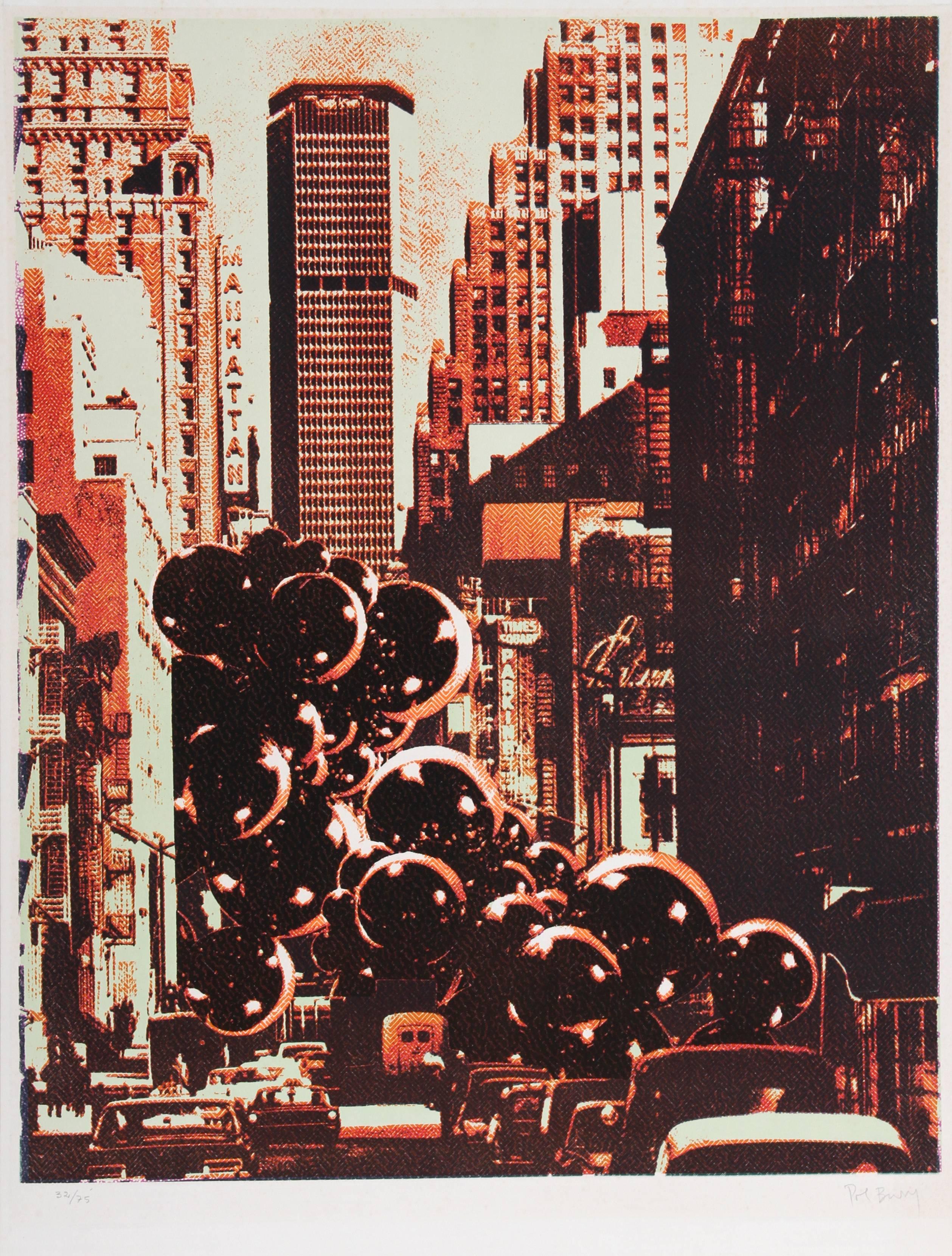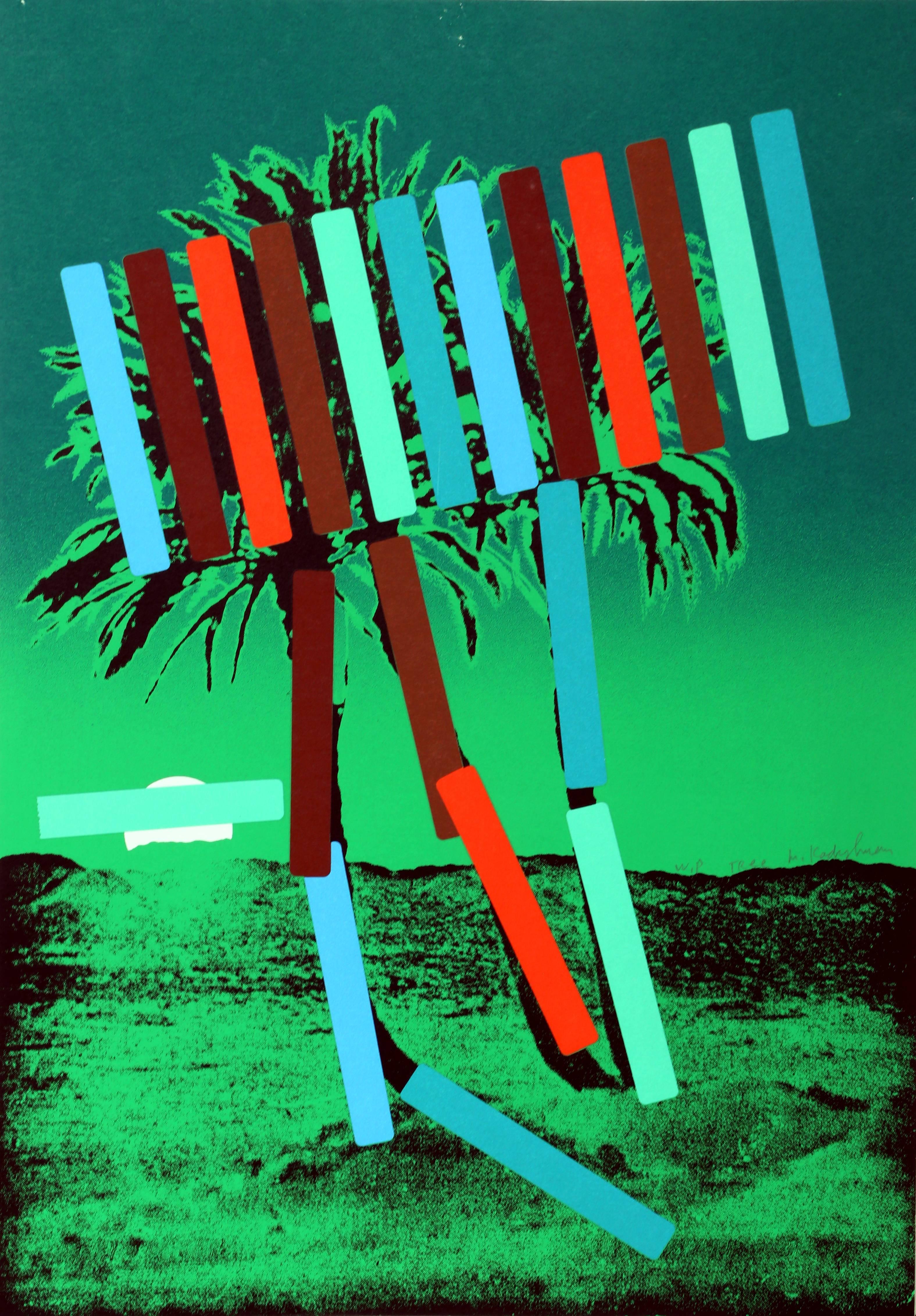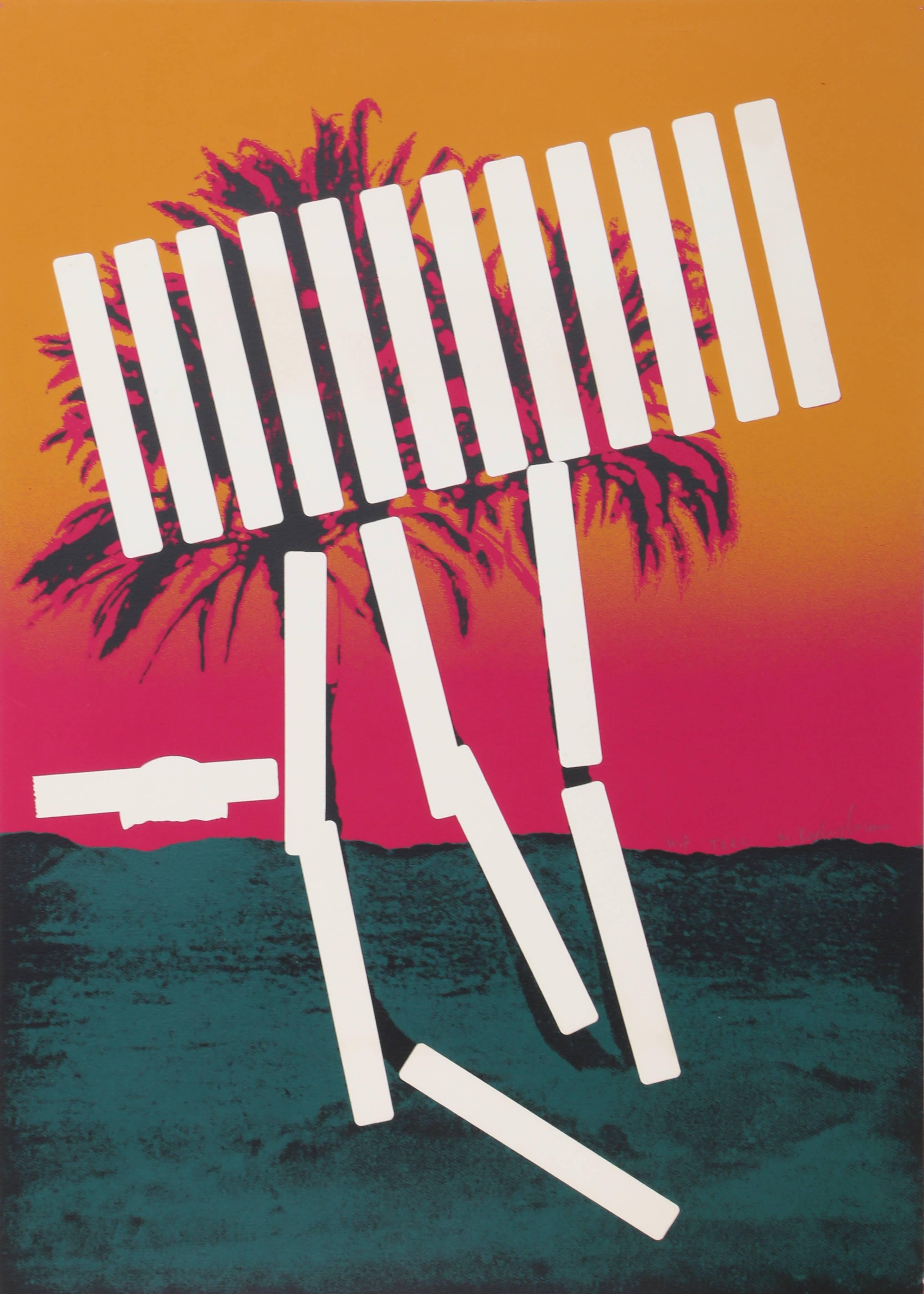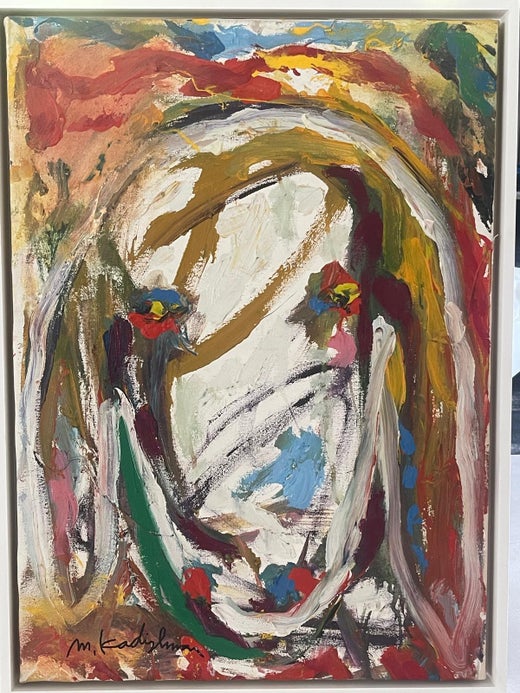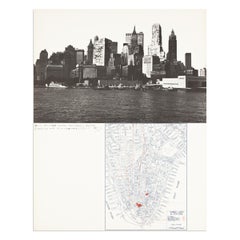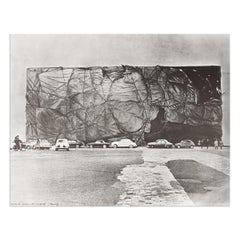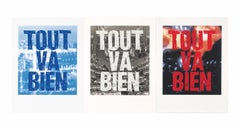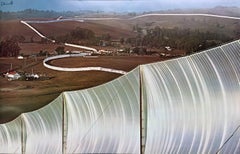Items Similar to "Red Palm" Working Proof Print by Menashe Kadishman
Want more images or videos?
Request additional images or videos from the seller
1 of 6
Menashe Kadishman"Red Palm" Working Proof Print by Menashe Kadishman1979
1979
About the Item
Artist: Menashe Kadishman, Israeli (1932 – 2015)
Title: Red Palm
Year: 1979
Medium: Serigraph, signed in pencil
Edition: WP (Working Proof)
Size: 30.5 x 21.5 inches
- Creator:Menashe Kadishman (1932, Israeli)
- Creation Year:1979
- Dimensions:Height: 30.5 in (77.47 cm)Width: 21.5 in (54.61 cm)
- Medium:
- Movement & Style:
- Period:
- Framing:Framing Options Available
- Condition:Minor wear consistent with age and history. Small pinholes near top edge indicate that this edition is a working proof.
- Gallery Location:Long Island City, NY
- Reference Number:1stDibs: LU4662918963
Menashe Kadishman
Menashe Kadishman was born in Mandate Palestine. His father died when he was 15 years old. He left school to help his mother and provide for the family.[1] From 1947 to 1950, Kadishman studied with the Israeli sculptor Moshe Sternschuss at the Avni Institute of Art and Design in Tel Aviv, and in 1954 with the Israeli sculptor Rudi Lehmann in Jerusalem. In 1950–1953, Kadishman worked as a shepherd on Kibbutz Ma'ayan Baruch. This experience with nature, sheep and shepherding had a significant impact on his later artistic work and career. In 1959, Kadishman moved to London to study at Saint Martin's School of Art and the Slade School of Art.[2] In 1959-1960 he also studied with Anthony Caro and Reg Butler.[2] He had his first one-man show there in 1965 at the Grosvenor Gallery. In 1972, he returned to Israel. In the 1960s, Kadishman's sculptures were Minimalist in style, and so designed as to appear to defy gravity. This was achieved either through careful balance and construction, as in Suspense (1966), or by using glass and metal so that the metal appeared unsupported, as in Segments (1968). The glass allowed the environment to be part of the work. The first major appearance of sheep in his work was at the 1978 Venice Biennale, where Kadishman presented a flock of colored live sheep as living art.[4] In 1995, he began painting portraits of sheep by the hundreds, and even thousands, each one different from the next. These instantly-recognizable sheep portraits soon became his artistic "trademark"
About the Seller
4.9
Platinum Seller
Premium sellers with a 4.7+ rating and 24-hour response times
Established in 1979
1stDibs seller since 2014
3,025 sales on 1stDibs
Typical response time: 1 hour
- ShippingRetrieving quote...Shipping from: Long Island City, NY
- Return Policy
Authenticity Guarantee
In the unlikely event there’s an issue with an item’s authenticity, contact us within 1 year for a full refund. DetailsMoney-Back Guarantee
If your item is not as described, is damaged in transit, or does not arrive, contact us within 7 days for a full refund. Details24-Hour Cancellation
You have a 24-hour grace period in which to reconsider your purchase, with no questions asked.Vetted Professional Sellers
Our world-class sellers must adhere to strict standards for service and quality, maintaining the integrity of our listings.Price-Match Guarantee
If you find that a seller listed the same item for a lower price elsewhere, we’ll match it.Trusted Global Delivery
Our best-in-class carrier network provides specialized shipping options worldwide, including custom delivery.More From This Seller
View AllCity 50, Geometric Abstract Screenprint by Risaburo Kimura
By Risaburo Kimura
Located in Long Island City, NY
Artist: Risaburo Kimura (1924 - )
Title: City 50
Year: 1969
Medium: Screenprint, signed in pencil
Edition: AP
Size: 25 x 19 inches
Category
1960s Conceptual Landscape Prints
Materials
Screen
$560 Sale Price
20% Off
Bridge, Geometric Pop Art Screenprint by Allan D'Arcangelo
By Allan D'Arcangelo 1
Located in Long Island City, NY
Artist: Allan D'Arcangelo, American (1930 - 1998)
Title: Bridge
Year: 1979
Medium: Serigraph, signed and numbered in pencil
Edition: 120
Image Size: 29 x 40 inches
Size: 35 x 46 in. ...
Category
1970s Conceptual Landscape Prints
Materials
Screen
City 57, Geometric Screenprint by Risaburo Kimura
By Risaburo Kimura
Located in Long Island City, NY
Artist: Risaburo Kimura, Japanese (1924 - )
Title: City 57
Year: 1969
Medium: Screenprint, signed in pencil
Edition: 6/75
Size: 25 x 19 in. (63.5 x 48.26 cm)
Category
1960s Conceptual Landscape Prints
Materials
Screen
$520 Sale Price
20% Off
Pan Am Building, Conceptual Screenprint by Pol Bury
By Pol Bury
Located in Long Island City, NY
Artist: Pol Bury, Belgian (1922 - 2005)
Title: Pan Am Building
Year: circa 1970
Medium: Silkscreen, signed and numbered in pencil
Edition: 32/75
Image Size...
Category
1970s Conceptual Landscape Prints
Materials
Screen
"Green Palm" Serigraph by Menashe Kadishman
By Menashe Kadishman
Located in Long Island City, NY
Artist: Menashe Kadishman, Israeli (1932 – 2015)
Title:Green Palm
Year: 1979
Medium: Serigraph, signed in pencil
Edition: WP (Working Proof)
Size: 30.5 x 21...
Category
1970s Conceptual Landscape Prints
Materials
Screen
"Pink Palm" Serigraph by Menashe Kadishman
By Menashe Kadishman
Located in Long Island City, NY
Artist: Menashe Kadishman, Israeli (1932 – 2015)
Title: Pink Palm
Year: 1979
Medium: Serigraph, signed in pencil
Edition: WP (Working Proof)
Size: 30.5 x 21...
Category
1970s Conceptual Landscape Prints
Materials
Screen
You May Also Like
Christo, Lower Manhattan Packed Buildings (Monuments) - Signed Print
By Christo
Located in Hamburg, DE
Christo (American-Bulgarian, b. 1935)
Lower Manhattan Packed Buildings (2 Broadway and 20 Exchange Place, from Monuments), 1968
Medium: Offset and screen print on Bristol board
Dimen...
Category
20th Century Conceptual Landscape Prints
Materials
Offset, Screen
Christo - Edifice Public Epaqueté, Project (from Monuments) - Signed Print
By Christo
Located in Hamburg, DE
Christo (American-Bulgarian, b. 1935)
Edifice Public Epaqueté, Project (Ecole Militaire de Paris, from Monuments), 1968
Medium: Screen print on Bristol board
Dimensions: 70 × 54.5 cm...
Category
20th Century Conceptual Figurative Prints
Materials
Screen
Tu Va Bien
Located in Pine Plains, NY
From his series "Sentences", Muntadas addresses through his works social, political and communications issues, the relationship between public and private space within social framewo...
Category
Early 2000s Conceptual Landscape Prints
Materials
Archival Pigment
Running Fences White
By Christo and Jeanne-Claude
Located in Boston, MA
Artist: Christo,
Title: Running Fences White
Series: Running Fences
Date: 1976
Medium: Offset Lithograph
Dimensions: 25" x 39"
Signature: Signed...
Category
1970s Conceptual Landscape Prints
Materials
Offset
Isabelle Carbonell "Somewhere Over the Rainbow" Iconic Wizard of Oz Set of Four
Located in Detroit, MI
"Somewhere Over the Rainbow" is one of a set of four digital prints whose titles were inspired by the iconic film The Wizard of Oz starring ...
Category
Early 2000s Conceptual Landscape Prints
Materials
Digital Pigment
Still Life Conceptual Scene, Playful Seafood in Vivid Color, Blue, Yellow , Pink
By Ryan Rivadeneyra
Located in Barcelona, ES
"Sexy Miami Futuristic Cocktail Lounge" is a series of photographs by Ryan Rivadeneyra inspired by the Art Deco colors of Miami that show beautiful objects and textures arranged meti...
Category
2010s Conceptual Landscape Prints
Materials
Photographic Film, C Print, Giclée, Archival Pigment
Recently Viewed
View AllRead More
Romare Bearden’s Humanity Infuses His Bright, Bold Art
Through collage, painting and printmaking, the artist foregrounded Black life in America in revolutionary new ways.
Chryssa’s 1962 Neon Sculpture Was Way ahead of the Art-World Curve
By working with lettering, neon and Pop imagery, Chryssa pioneered several postmodern themes at a time when most male artists detested commercial mediums.
